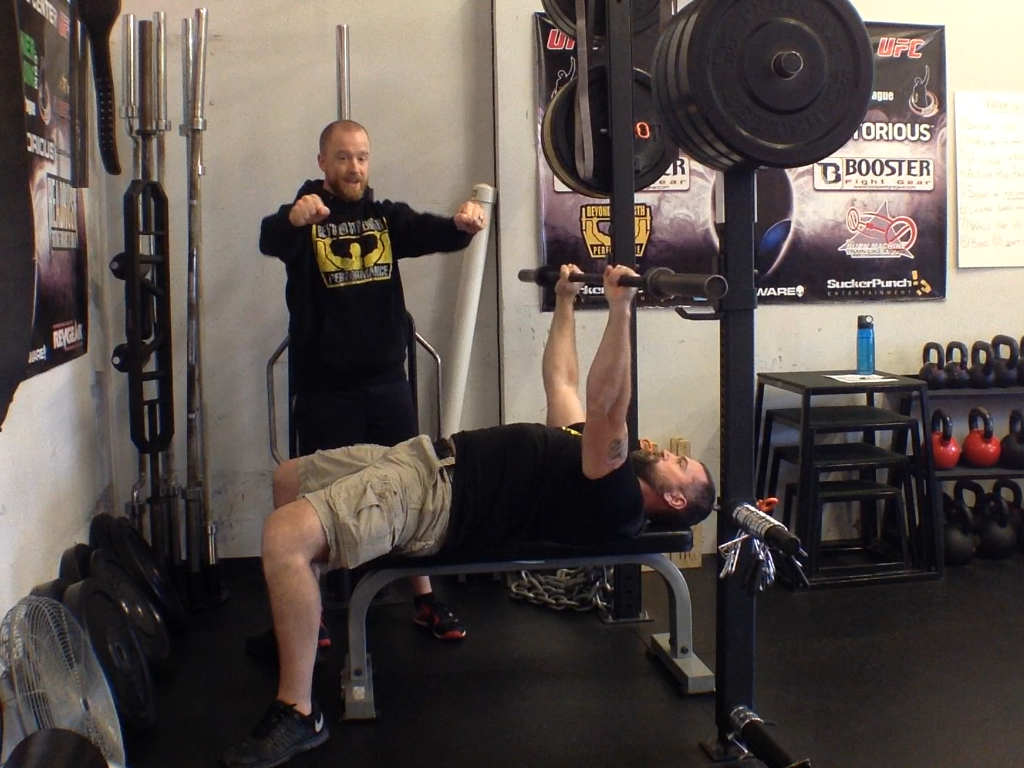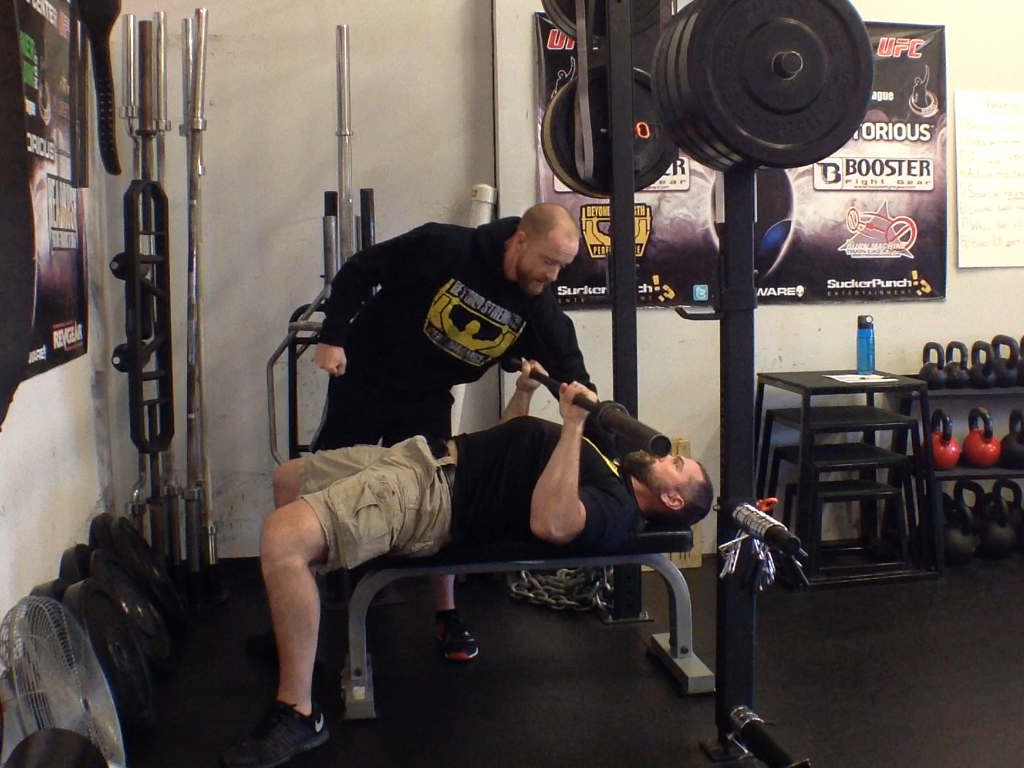Our bench press lesson begins with a nearly tragic tale that stars Todd as the hero.
Four or five years ago Todd was bench pressing with 315 stacked confidently on the bar. He did one rep, two reps and on the third rep, as the bar approached the halfway mark, it slipped from his hands and crashed into his rib cage.
Luckily a brutish man was spotting him and grabbed the bar as soon as bounced off of his chest. Luckily Todd wasn’t injured. He learned, however, the importance of proper wrist alignment and a strong, crushing grip.
A few short weeks later, Todd benched 405 in competition while weighing 197. He staunchly focused on grip, alignment and tension to prepare for that heavy press and avoid another iron waterfall into his chest cavity.
Â
The bench press is a barbell exercise that starts with the trainee face up on a lifting bench with the bar over the chest with the arms fully extended. It requires the elbows to flex, and the shoulders to extend, until the bar touches the chest. The bar is then pressed back to the starting position with the arms fully extended.
Â
The bench press is great upper-body strength building movement that’s often botched. People often misplace the bar on the chest, move it in a bad path and align the wrists, elbows and upper-arms in bad positions.
Let’s think success first and bullet point a good bench press:
Here’s a bad bench press:
Â
A solid bench press starts with a simple cueing mantra: B.P.P.
Â
B = Break
Â
P = Pull
Â
P = Press
Â
Break
Â

Break the bar! Spend time in powerlifting gyms and your ears will ring with this cue. We’ve heard it bellowed by the largest of men that, consequently, had gender-neutral names.
Its greatness comes from its productivity: it teaches tension and alignment.
Break implies grabbing the bar as hard as possible while creating external rotation torque. Remember how you’d snap pencils with both hands in school? That’s the exact torque you need.
This torque aligns the wrists, elbows and shoulders into a good pressing position. It also creates the tension that precedes strength.
Pull
Â

Bench press descents are often too lax and devoid tension. That dog just won’t hunt. Tension created during the descent prepares for a powerful press from chest to lock out. We create that tension by “pulling†the bar down.
Pull the bar down as if you were performing a row. This rowing action brings the chest toward the bar while tightening the upper-back muscles. The combination creates a solid platform for you to press from. The tighter the posterior shoulder region becomes, the more stability it has. Creating stability by pulling down allows for a more forceful press because the body feels safe enough to take the breaks off.
Press
Â
It is, of course, called the bench press—but we coach the press differently. Rather than thinking of pressing the bar away from you, think of pressing yourself away from the bar.
Pressing the bar away from you elicits bad habits. First and foremost—it promotes laxity. Ever watch someone press and it looks as if their body hollows out—shoulder blades separate, chest caves. This is exactly what we’re avoiding, and it’s the product of thinking press the bar away.
When we press ourselves away from the bar we maintain the platform that we made by breaking and pulling. Shoulders stay in a solid, safe position that allows us to generate more force.
Â
A successful bench press set begins with a good set-up. Let’s cover set-up from the ground up.
Start with the feet—the whole foot remains on the ground so that we can drive through them. With that said, pull them back toward your butt as far as you can while still maintaining full foot contact.
Ass—it stays on the bench.
Align yourself on the bench so that your eyes are directly under the bar. This ensures that you’ll be in a good position to unrack the bar and have plenty of clearance to press.
Grip the bar at shoulder width or slightly wider. This grip limits stress on the shoulder while still aligning the joints in a strong pressing position. Make sure that you have your knuckles to the ceiling—this means that your wrists are straight and that you’re in the right position to break the bar.
From this point forward follow the cues: B.P.P.

